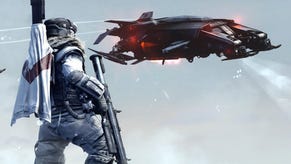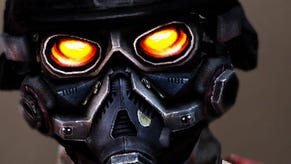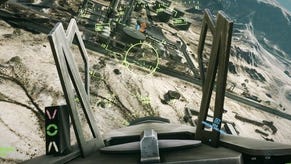Digital Foundry vs. Killzone 3
Sev the best for last.
If you're stuck on the game, check out our epic Killzone 3 video walkthrough.
We've been following the development of Killzone 3 closely with a mounting level of excitement. The game's predecessor - a half-decade in the making at Guerrilla Games - was a remarkable example of a shooter built from the ground up that concentrated on the technological strengths of the PlayStation 3 hardware. At the time of the game's release in February 2009 it was the most dramatic, spectacular example of just what was possible when the RSX chip's visual power was combined with the PS3's unique Cell CPU architecture.
In a genre where technology plays such an important part in defining the gameplay experience, Killzone 2 was a world apart from its competition. The deferred rendering system employed by the developer allowed the game to operate many more light sources than any other shooter of the time, giving it a unique appearance. Cell-powered pre-processing optimised the amount of geometry RSX actually had to process, allowing for richer, more detail-heavy environments, objects and characters. Post-processing effects work such as the camera and object-based motion blur was hived out to the SPU satellite processors - another example of how the CPU was utilised as a graphics co-processor, with the visual effects work distributed between the main processor and the GPU.
But of course, Killzone 2 was not without its faults - the make-up of the single-player campaign coming in for criticism, while the slow response from the controls was singled out by players as a particular concern.
This new sequel is important in a number of respects. For all of Killzone 2's technological accomplishments, presentations from Guerrilla revealed untapped system resources in the PlayStation 3 that the developer had yet to fully utilise. Unused processing time in the PS3's SPUs, combined with optimisation efforts in the core tech could push this engine to even greater graphical accomplishments, hopefully ironing out some of the performance issues that Killzone 2 shipped with.
Secondly, the PS3 brand itself had moved on significantly in the two years since Killzone 2 was released: PlayStation Move represents the most accurate, flexible controller in the video games market and had yet to be fully utilised in a first-person shooter - a challenge Guerrilla Games took very seriously. Sony's strong advocacy of 3DTV technology also needed to be backed up with as much high-level gaming support as possible, and despite the apparent impossibility of the task, the studio came up with an ingenious solution in implementing stereoscopic support into its existing engine.
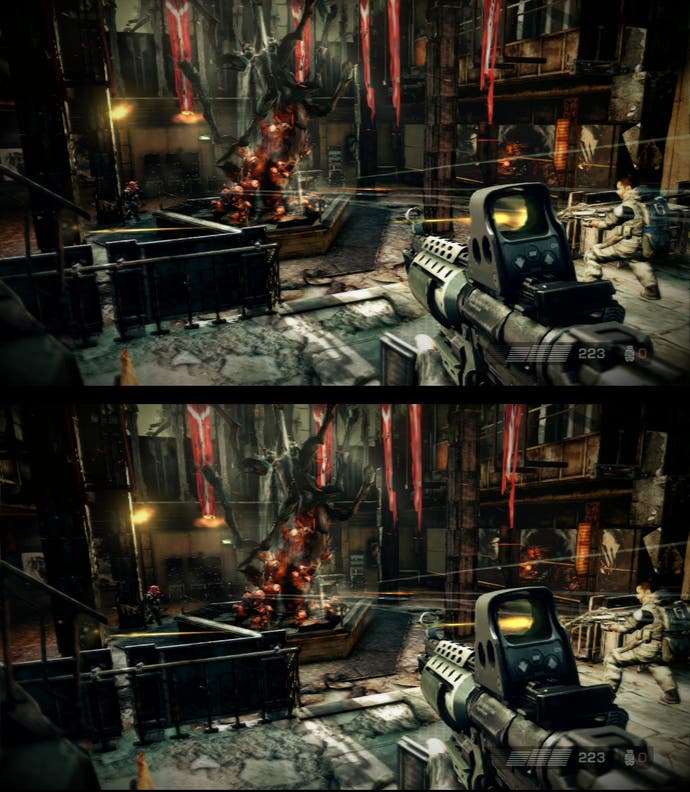
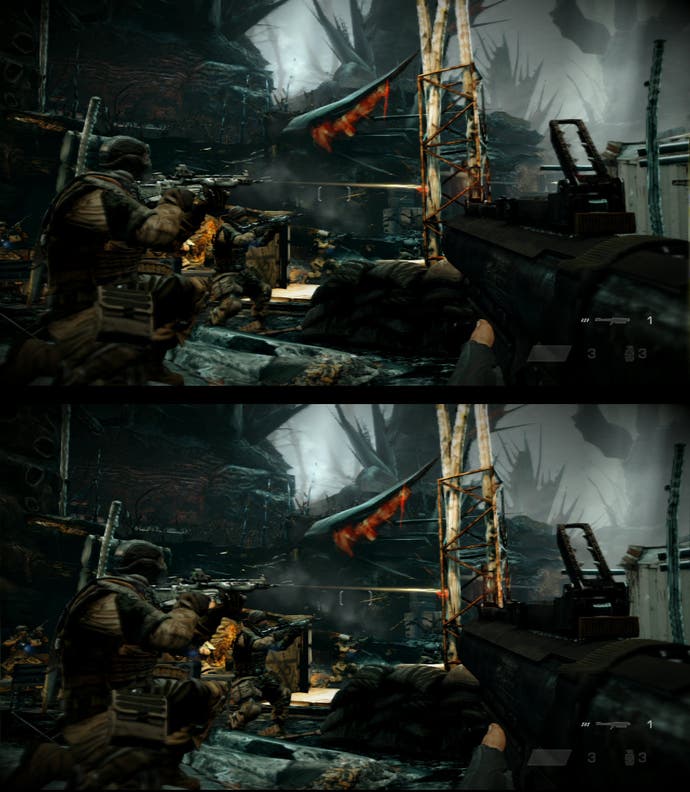
Finally, and most crucially, Killzone 3 gave Guerrilla Games an opportunity to address the criticisms levelled at the single-player game, while crafting a brand new, state-of-the-art multiplayer mode. Bearing in mind that the current Call of Duty offering is coming in for fierce criticism on PlayStation 3, and factoring in the technical weaknesses of the game compared to its Xbox 360 sibling, there's a strong argument that Sony will never have a better opportunity to take ownership of this genre.
First impressions of the new sequel are very favourable indeed: visually, it's still clearly a Killzone game, but somehow brighter and cleaner. Controls are massively improved: lighter, more responsive and less prone to the lag that its predecessor suffered from, meaning that Killzone's signature intense, visceral battles feel better to play than before.
Image Quality: Lighter, Brighter, More Detailed
Whether it's down to improved art direction, enhanced tech, or (as is most likely the case) a combination of the two, there's no denying that Guerrilla's latest shooter is a clear visual upgrade from Killzone 2.
Probably the biggest difference in the sequel is just how much lighter, brighter and more sharply defined the visuals are in comparison to Killzone 2. The dark and grungy atmosphere we're accustomed to rolls out across several levels, but the combination of a new anti-aliasing technique and dialled back post-processing allows more of the detail in the core art assets to shine this time around. When the location shifts to the more exotic locations in the game, the detail level is phenomenal - after the superb jungle level, the Scrapyard stage in particular stands out as a real visual highlight.
While more detail from the art is resolved with the new approach Guerrilla has taken with Killzone 3, we believe the engine has been significantly optimised to a degree that allows for more detailed environments: the hardware-driven anti-aliasing from Killzone 2 is now gone in favour of an SPU-driven alternative, so it wouldn't be surprising at all if this change, combined with optimisations to the CPU workload, allow Guerrilla to produce more detailed geometry.
Sony's morphological anti-aliasing (MLAA) that worked so beautifully in God of War III and LittleBigPlanet 2 has also been deployed within Killzone 3 and its effect on the overall appearance of the game cannot be under-estimated. At its best, MLAA can produce results beyond the quality achieved by 8x multi-sampling anti-aliasing, but unlike MSAA it is a screen-space effect that can only process information in the current framebuffer.
As it has no access to any depth information, it has specific issues dealing with sub-pixel edges - thin structures in the background are a typical problem area. While Sony's implementation is one of the best available (if not the best), it's still not perfect and the quality of the AA in Killzone 3 is probably the most variable we've seen in all of the MLAA titles released to date.
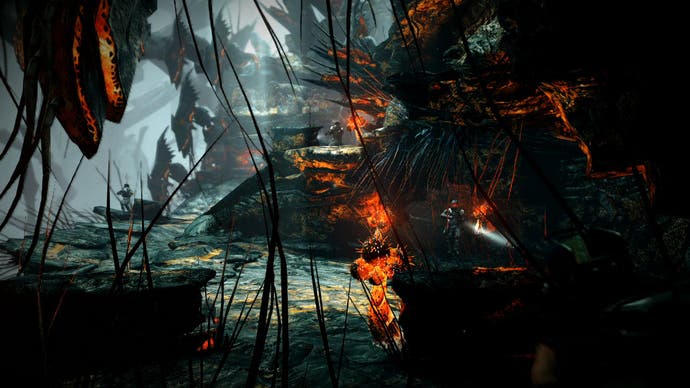
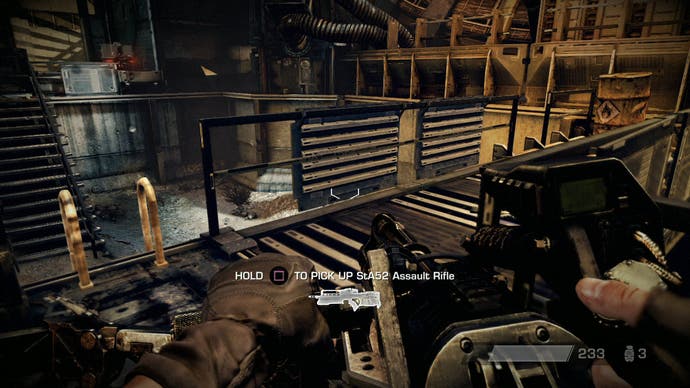
It's fair to say that there is both good and bad. On the jungle campaign stage, the results are absolutely phenomenal: uncannily good in fact, with virtually no edge-aliasing issues. The MLAA post-processing works beautifully in adding to the organic feel of the level. However, on the more industrial stages, the hard edges and something akin to a specular sheen produces a pixel-crawling effect that is not ideal.
The MLAA code is entirely driven by five of the Cell chip's SPUs operating in parallel, typically taking around 4-5ms to process a 720p image (with 33.33ms in total available to generate an entire frame). As discussed in our previous Killzone 3 tech analysis, Guerrilla's own presentations suggest that the powerful satellite processors had around 40 per cent leftover processing time, so the process of moving anti-aliasing across from GPU to CPU is a good way to free up precious RSX resources, not to mention saving around 18MB of precious graphics RAM.
Killzone 2 used Quincunx anti-aliasing to excellent effect. Generally speaking, we're not exactly big fans of QAA: while its edge-smoothing prowess is accomplished, the side-effect of adding a blur to the entire texture isn't exactly appealing. But in Killzone 2, it fit perfectly into the overall aesthetic: grainy, gritty, dirty... everything heavily post-processed. There's no way you could level any kind of complaints about "teh jaggies" in Guerrilla's last game: between the QA, the post-processing and the generous use of camera and object-based motion blur, basically there wasn't any.


